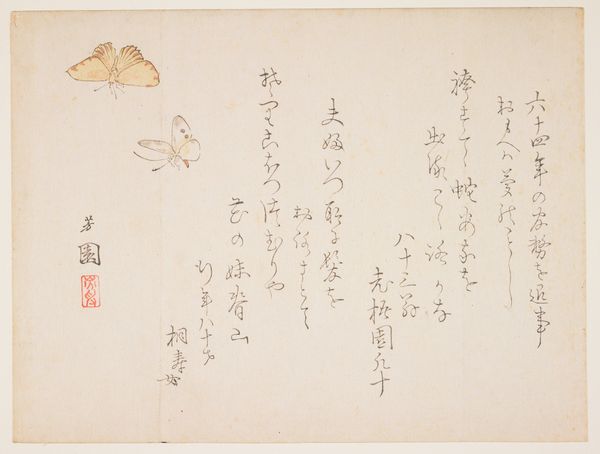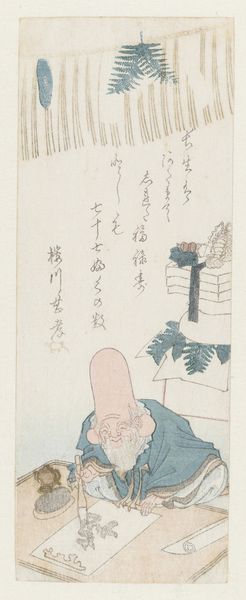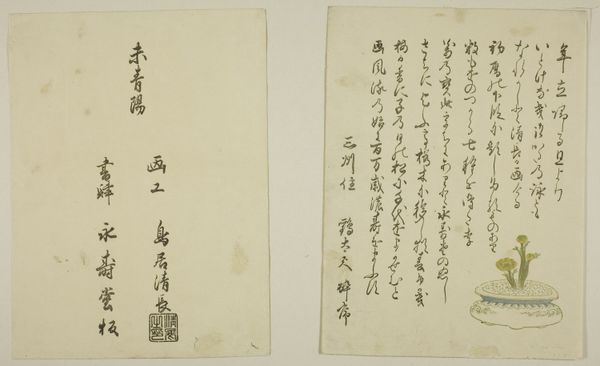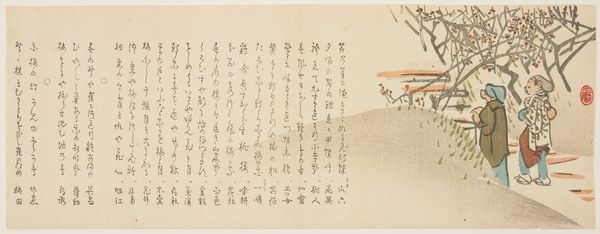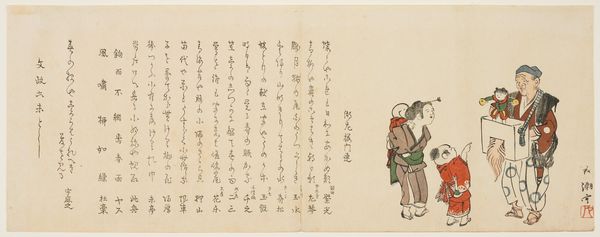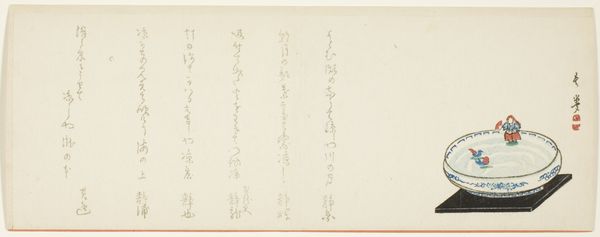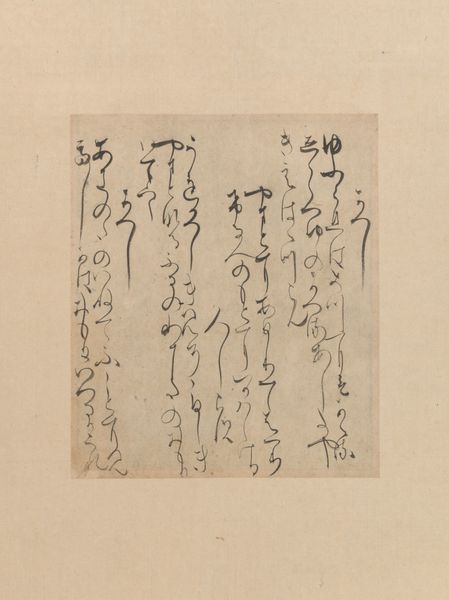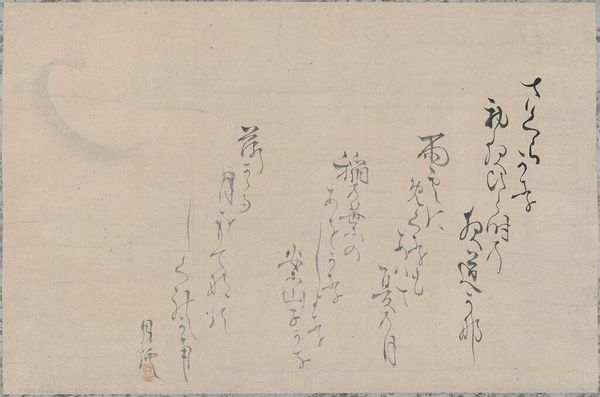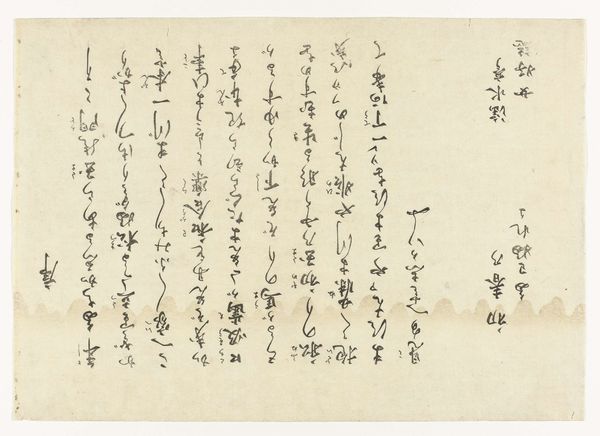
drawing, paper, ink
#
portrait
#
drawing
#
blue ink drawing
#
asian-art
#
ukiyo-e
#
figuration
#
paper
#
ink
#
sketchbook drawing
#
watercolour illustration
Dimensions: height 189 mm, width 98 mm
Copyright: Rijks Museum: Open Domain
Editor: Here we have Hasegawa Settan's "A Toy Monkey," a delicate ink and watercolour drawing on paper from 1836. I'm immediately struck by how simple yet evocative it is. The monkey seems almost contemplative. What do you see in this piece, considering its historical context? Curator: I see a reflection of the complex social dynamics of Edo-period Japan. Monkeys, in Japanese folklore, are often seen as mischievous but also protective, linked to Shinto beliefs and warding off evil. Given the period, and the artist's exploration of Ukiyo-e themes, this "toy" could be more than just a child's plaything. Editor: How so? What might it symbolize beyond just a toy? Curator: Well, consider the socio-political landscape. The Tokugawa Shogunate imposed strict social hierarchies. This image, while seemingly innocuous, might subtly critique those power structures. Is the monkey, rendered as a "toy," perhaps a commentary on the constraints placed upon individuals? Does the surrounding text lend clues to the political environment? Editor: That's fascinating! The script almost dwarfs the figure itself. Could the artist have intended to convey that individual expression, represented by the small monkey, is being overshadowed or even suppressed by larger social forces? Curator: Precisely. The deliberate contrast in scale between the text and the image reinforces that reading. Further, the choice of rendering a monkey - often a symbol of rebellion - as a harmless "toy" may be a form of subtle resistance against those prevailing structures of power and control during the Edo-era. What else stands out for you? Editor: I hadn't considered the possible symbolism so deeply, and I see a fresh interpretation now! Curator: Indeed! Exploring such intersections can offer critical perspectives. These help us appreciate how artists can use art to navigate complex social terrains, questioning norms.
Comments
No comments
Be the first to comment and join the conversation on the ultimate creative platform.

